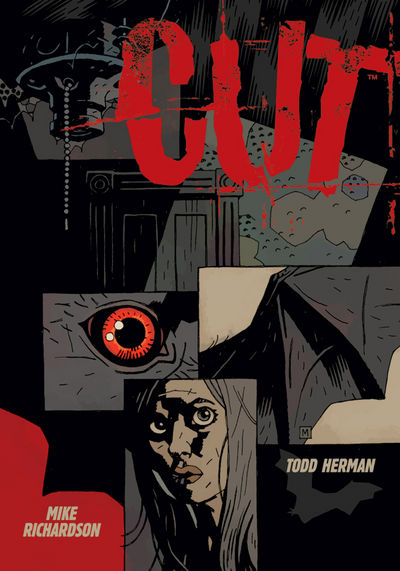
In 2003, Dark Horse launched a line of horror comics built around Hellboy and Buffy, and the then new additions to our line up, Criminal Macabre and The Goon. We invite you to discover darkness during the long cold nights this winter by turning our focus again to our horror line, and what makes our line unique.
Where would horror comics be without monsters? And yet how many modern horror comics take themselves too seriously to make use of monsters? Whether in sci-fi, superhero comics, or horror, the monster always livens up a story, in terms of action and visual punch. This month, even the usually reserved and literary Rex Mundi (issue #9) makes great use of a monster, borrowing from mythology and turning the griffin into something awful. This month Dark Horse has vampires (Cut); a demon baby (Criminal Macabre); a shapeshifter worse than the werewolf (B.P.R.D.); zombies (Living with the Dead); and probably everything else you can think of in Steve Niles's Criminal Macabre: The Complete Short Stories, collecting all his prose Cal McDonald work.
While there are moments of shocking, visceral horror in B.P.R.D., Rex Mundi, and City of Others, we seldom rely on the gross out to be the source of entertainment. It's a legitimate direction for the horror genre, but gore in comics just isn't the same as in film, where you can see the splatter move across the screen. It's just another color of ink, which doesn't seem like a compelling storytelling trick. Dark Horse publisher Mike Richardson has written some horror books lately. In Cut he borrows his set-up from the torture-porn subgenre-but never rubs the reader's face in blood and guts; he relies on what frightens the main characters, the waiting and not knowing. We're not prudes-we did publish The Nail and Satan's Sodomy Baby--but we think there are more effective ways to get under the readers' skin.
The Goon is known for its humor, and Evil Dead is blatantly funny, but humor also abounds our other books. The writing of Joss Whedon, Mike Mignola, and Steve Niles all rely on a certain amount of levity. Laughter can contrast the light and the dark. It can catch the reader off guard. As anyone who's been to a horror movie in the theatre can tell you, at some point, the tension is gonna be so great the audience is gonna have to laugh. Better that they laugh when you want them to.
And lest you think that we don't take ourselves seriously enough, one of the most distinctive traits in our line is a certain literary quality. Mignola and Niles's work draws upon such diverse literary background as folklore, 19th-century gothic fiction, and the pulp horror and detective stories of the early 20th century. Rex Mundi is intensely literary, as dense as Watchmen--when complete it will be recognized as the more literary cousin of The Da Vinci Code.
A carelessly sketched-out character in a slasher film isn't meant to elicit sympathy; they're there to give you a thrill, to make it easy to watch them die. Our books feature real characters, never secondary to the trappings of the genre. Only through such real characters can horror fiction shake the convictions that keep us safe, inspiring the "cosmic awe" that Lovecraft wrote about, and upending the morality that guides us.
To connect on that level of fear, we find these qualities popping up again and again in our books. If you're reading this page, maybe you're already a fan of our horror books--or maybe you're reading this in the back of a Star Wars comic, or Groo. In that case, Discover Darkness with us this winter.
Scott Aliie
editor